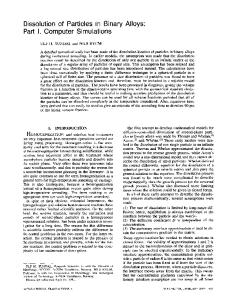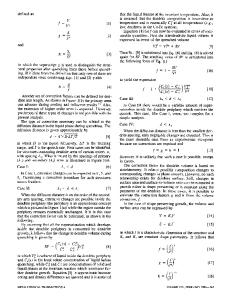Resistance-Spot-Welded AZ31 Magnesium Alloys: Part I. Dependence of Fusion Zone Microstructures on Second-Phase Particle
- PDF / 1,848,736 Bytes
- 12 Pages / 593.972 x 792 pts Page_size
- 62 Downloads / 231 Views
ODUCTION
AS one of the predominant joining techniques in sheet metal assembly, resistance spot welding (RSW) is a primary method for joining automotive structural components due to its advantages in terms of welding efficiency and automation. Magnesium (Mg) alloys have recently received strong research interest in the automobile industry, since considerable weight savings can be realized by substituting aluminum or steel components with these alloys. The behavior of Mg alloys during RSW is different from that of steel or Al alloys due to their lower melting point, greater fluidity, higher chemical activity, higher thermal and electrical conductivity, and larger coefficient of linear expansion. The differences in thermal, structural, and electrical properties also lead to differences in solidification microstructure of alloys.[1,2] It has been found that the strength of Mg alloy L. XIAO and L. LIU, Ph.D. Candidates, Y. ZHOU, Professor, and S. ESMAEILI, Assistant Professor, are with the Department of Mechanical & Mechatronics Engineering, University of Waterloo, Waterloo, ON, Canada N2L 3G1. Contact e-mail: nzhou@mecheng1. uwaterloo.ca L. LIU is also a Ph.D. Candidate with the State Key Laboratory of Advanced Welding Production Technology, Harbin Institute of Technology, Harbin, P.R. China. Manuscript submitted April 14, 2009. Article published online March 27, 2010 METALLURGICAL AND MATERIALS TRANSACTIONS A
weldments is much lower than that of the base material and also that the weldability of Mg alloys joined by conventional fusion welding is inferior to that of steel.[1,2] In fusion welds, columnar and equiaxed grains are often the predominant macrostructural constituents.[3–6] The columnar dendritic structure formed in the fusion zone can seriously compromise the mechanical properties of the joints. Equiaxed grain structure in welds usually is more desirable than columnar, since the former may have less segregation of alloying elements and, hence, more isotropic microstructure and mechanical properties. Moveover, fine equiaxed grains enhance mechanical properties as well. Therefore, there has been considerable experimental research on the columnarequiaxed transition (CET) in welds, mainly of aluminum alloys and stainless steel, but not of Mg alloys.[7–11] Various grain refinement techniques have been applied in controlling the bead microstructures, such as electromagnetic stirring, current pulsing, torch vibration, arc oscillation, and inoculation.[6,12] Among them, inoculation using grain refining agents offers the greatest promise for practical application.[13–16] In aluminum gas-tungsten arc (GTA) welds, Kerr and co-workers[7,8] and later Kou and Le[10,11] observed that Ti-rich particles acting as heterogeneous nucleation sites promoted CET. The presence of sufficient nucleants, a low thermal gradient, and a high solid/liquid interface velocity VOLUME 41A, JUNE 2010—1511
usually favors the CET.[6–16] Several mechanisms have been proposed to assist the CET during solidification of welds, including surface nucleation,[9,17] d
Data Loading...











